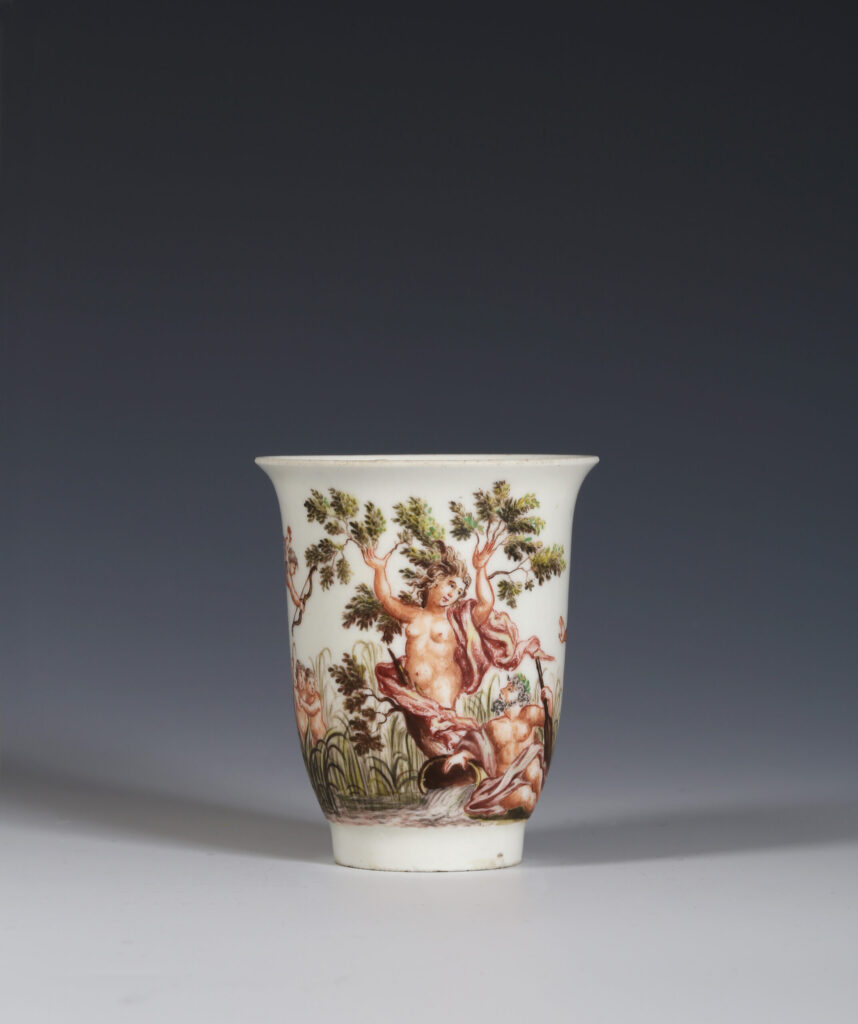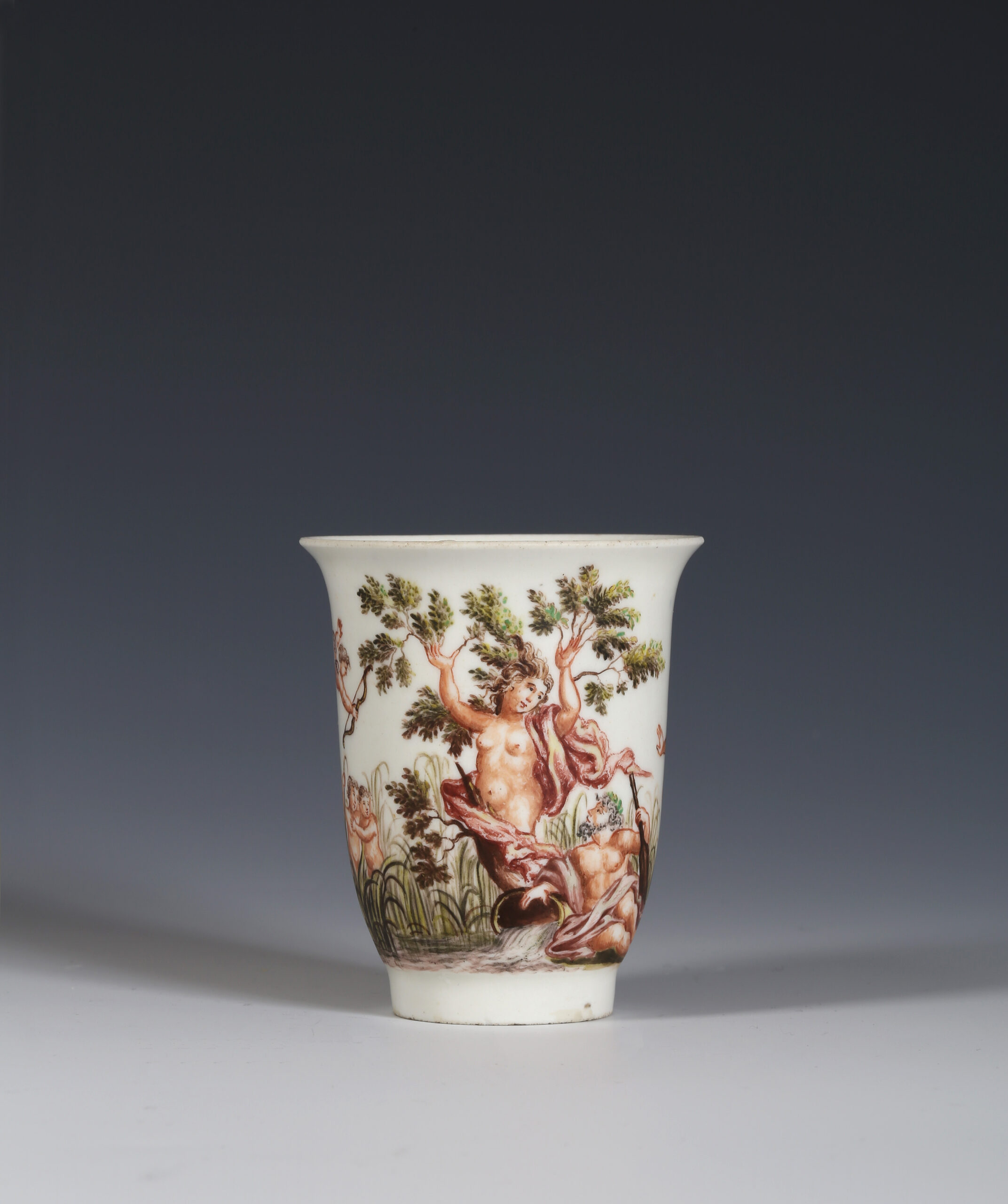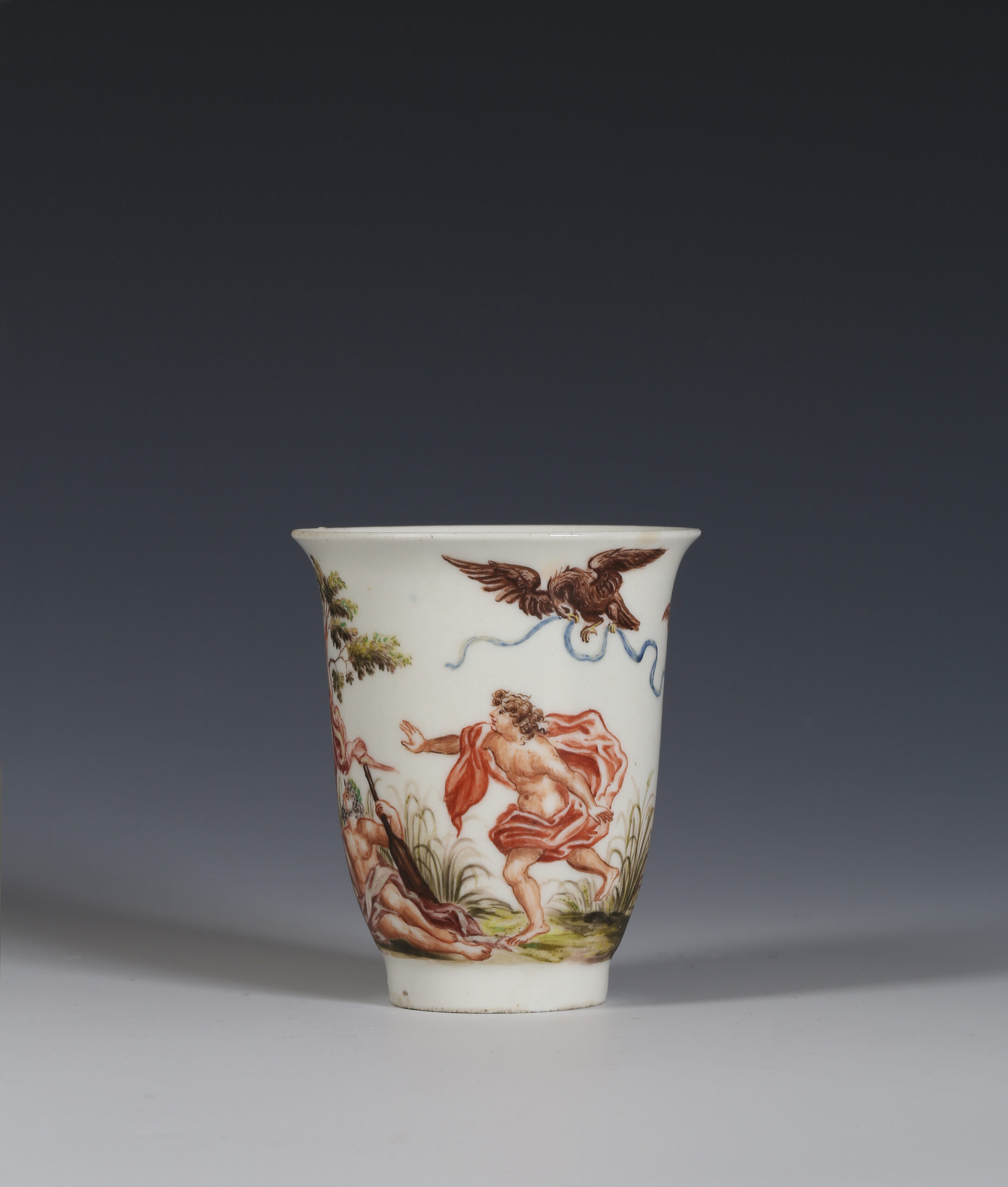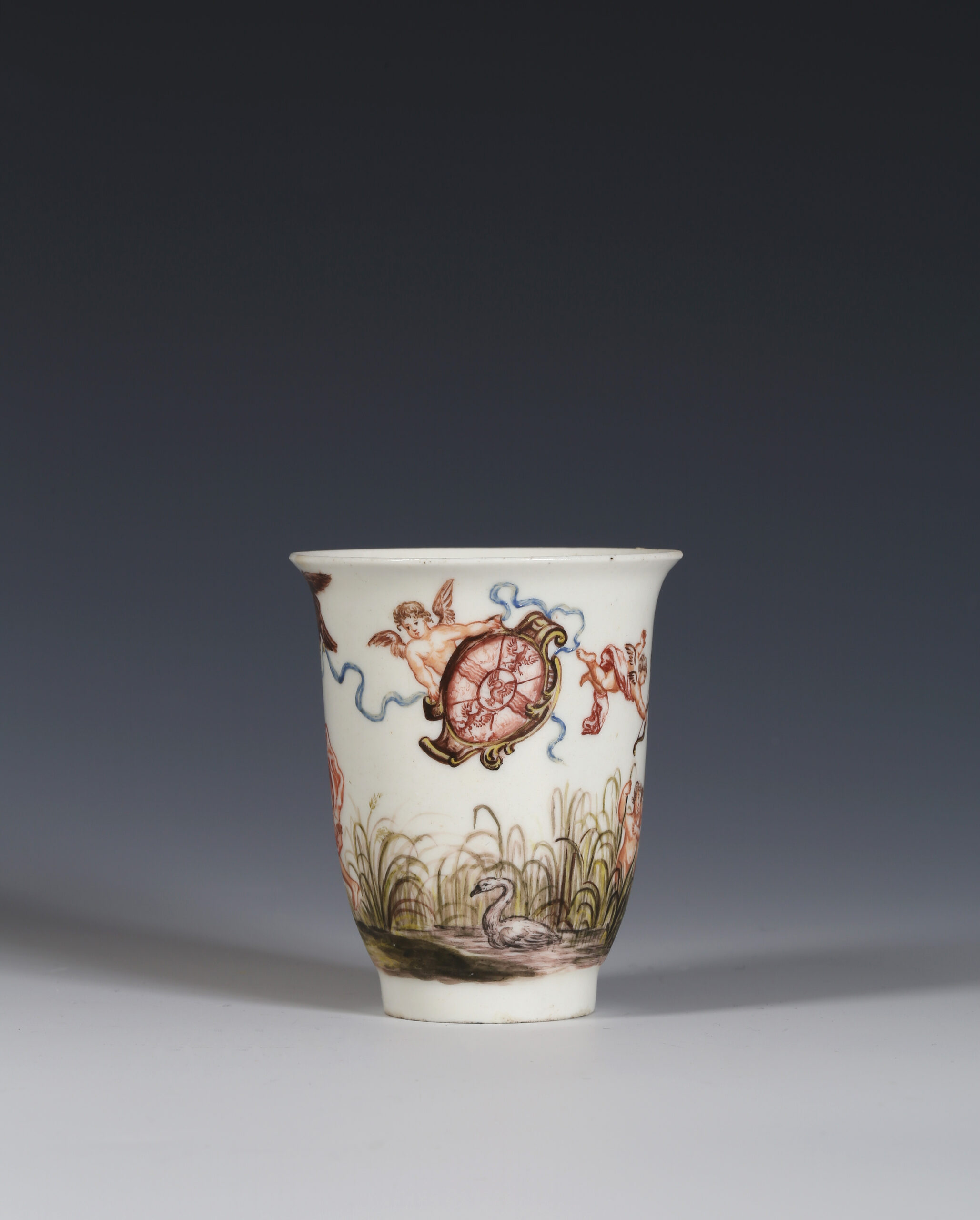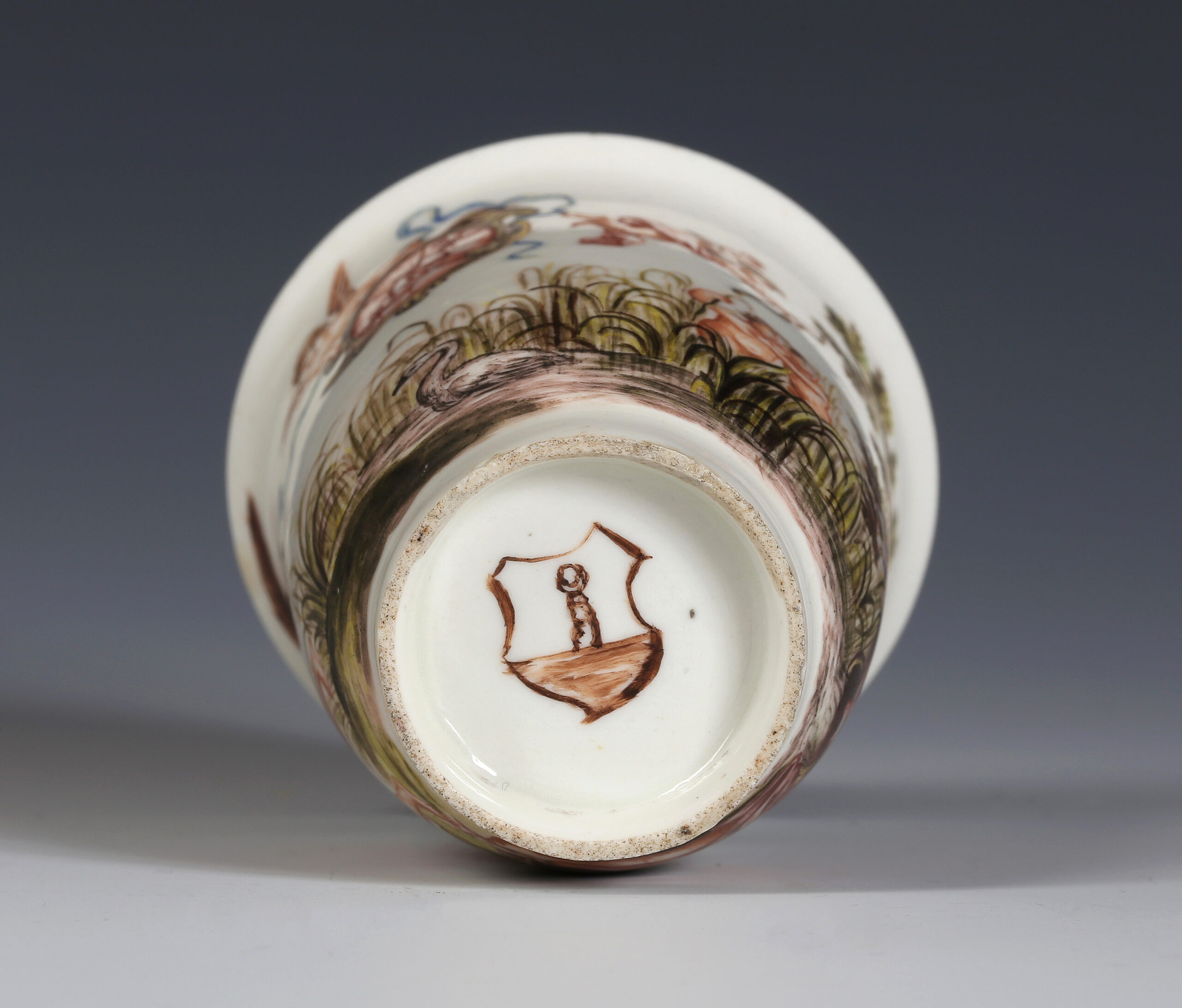Painted with Daphne and Apollo from Ovid’s Metamorphoses, taken from one of the numerous versions of this story, perhaps after the design by Jean Le Pautre engraved by La Blond.
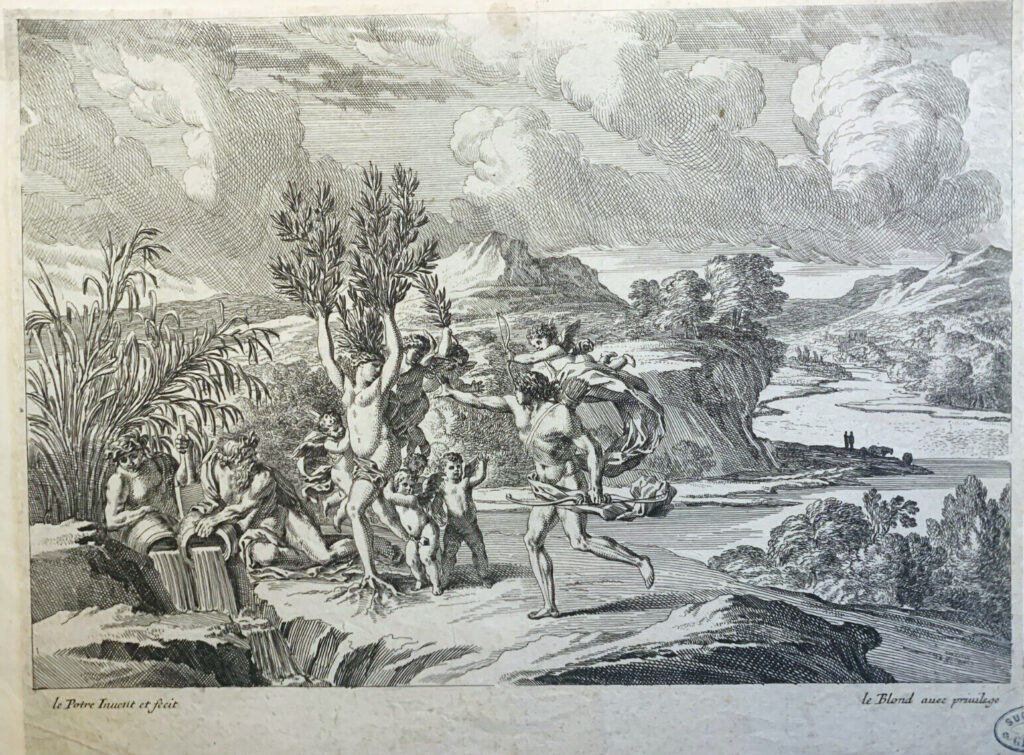
Daphne and Apollo, Jean Le Pautre engraved by La Blond.
The reverse is painted with an unidentified coat of Arms with a scrolled shield held by a putto. An almost identical scrolled shield supported by putti occurs on a coffee pot in the Metropolitan Museum of Art which also has the same scene of Daphne and Apollo. This coffee pot has figures of the Zodiac accompanied with six-pointed stars, a symbol of the Holy Roman Emperor Charles VI (1685 – 1740), and is thought to have been made for him. [i]
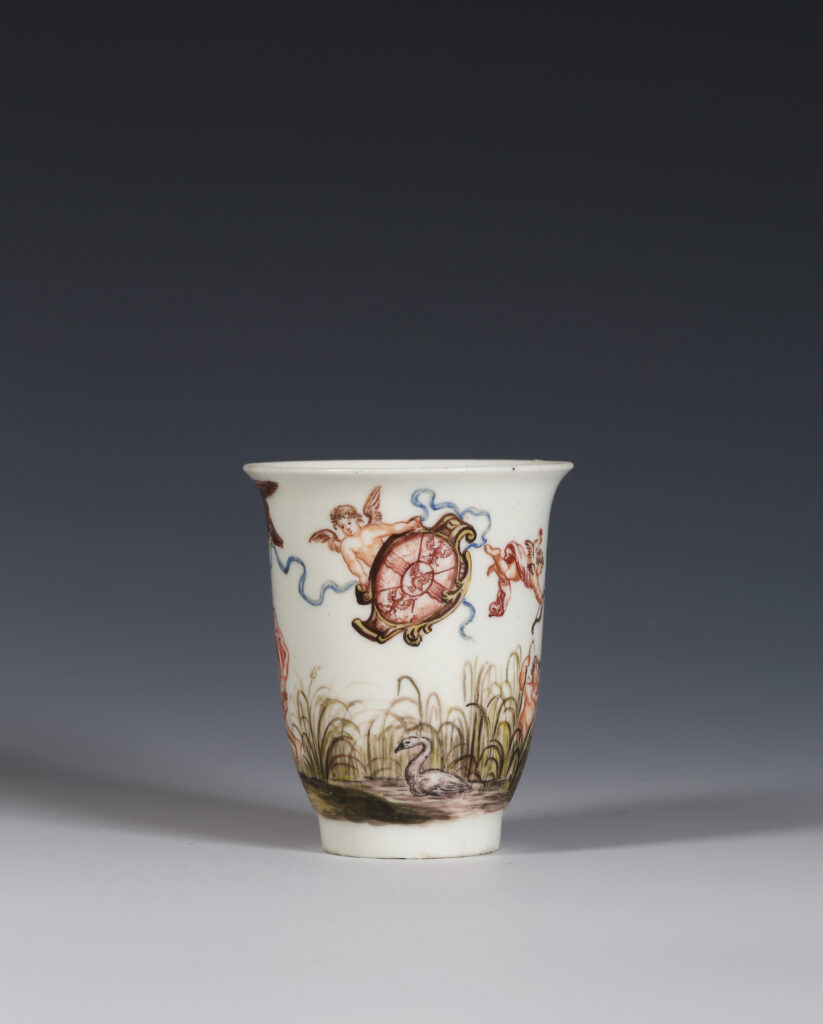
The reverse of our beaker showing the unidentified armorial
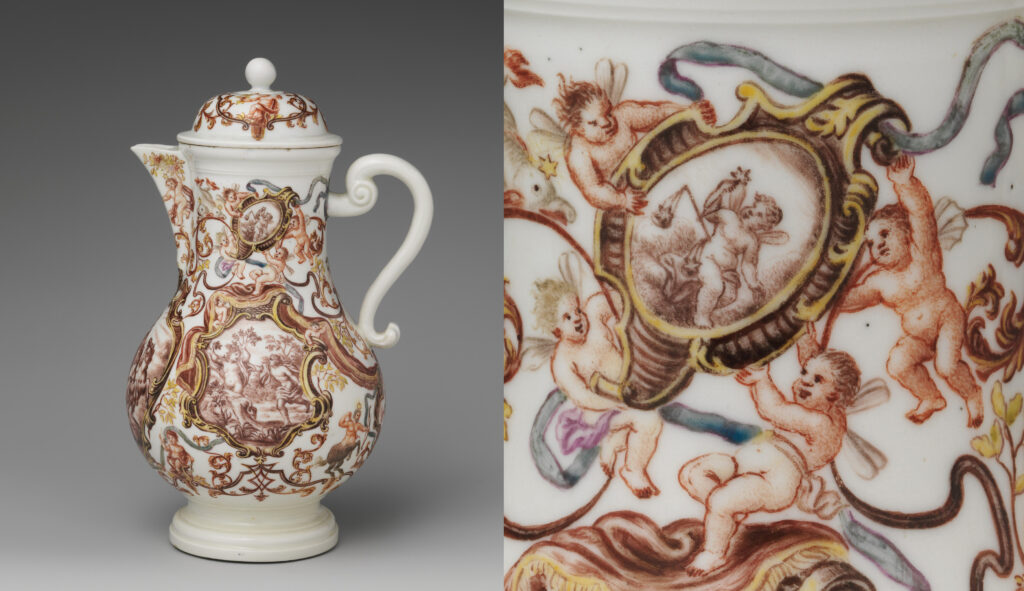
Coffee pot by Ignaz Bottengruber, The Metropolitan Museum of Art, Gift of R. Thornton Wilson, in memory of Florence Ellsworth Wilson, 1950
A further intriguing feature of this beaker is the shield painted within the foot ring, with an arm holding a ring or a wreath. This is perhaps the Arms or crest of the Schiller family of Nuremburg. The same arms appear on at least three other examples of hausmaler work.
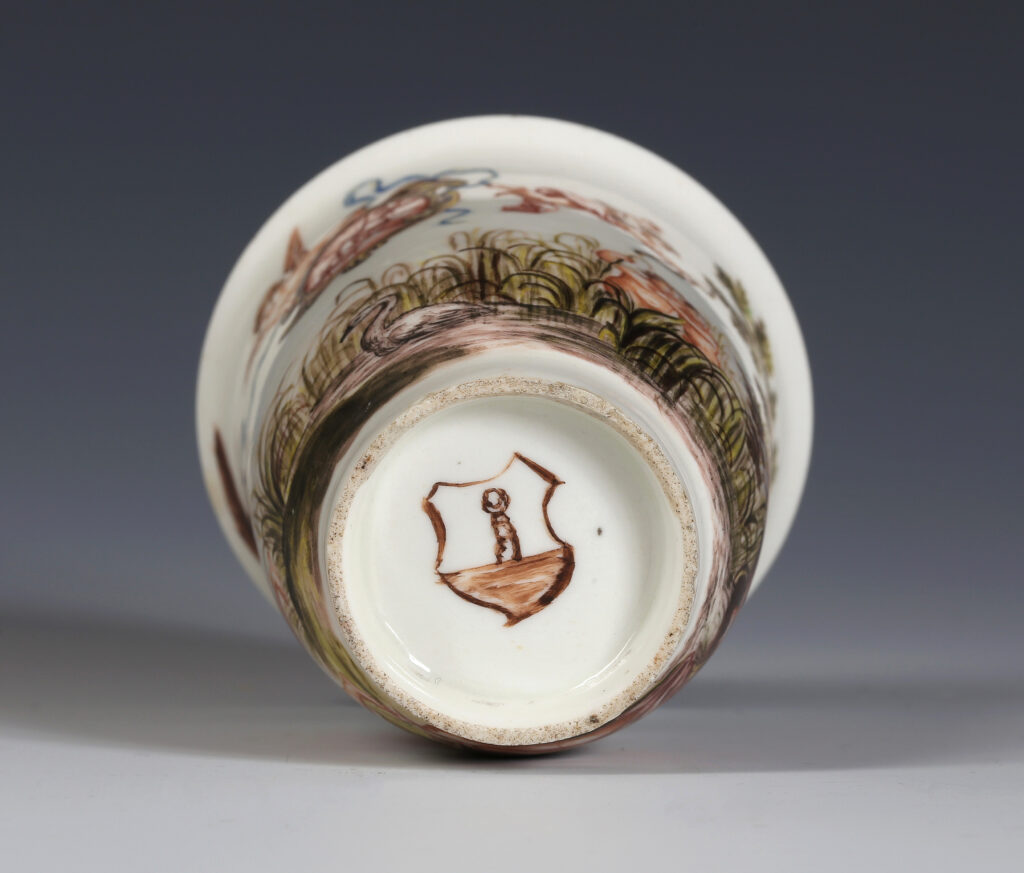
- Nuremburg glass deckelhumpen of 1681 painted in schwarzlot by an unknown hausmaler in the Toledo Museum of Art.[ii]
- In the same distinctive shape of shield on the underside of an outside decorated Böttger porcelain saucer, attributed to Ignaz Preissler, painted with Turkish figures in colours.[iii]
- A Chinese schwarzlot tea bowl and saucer in the British Museum, finely painted with ships in harbour. The arms are concealed in a tiny roundel amongst the waves.[iv]

The British Museum, Franks.1441, detail of the crest
I speculate that there may be some connection between the Schiller family and the man named Schüller that Maureen Cassidy-Geiger noted:
‘In 1701 Ehrenfried Walter von Tschirnhaus, who was later to co-discover the secret of true porcelain with Johann Friedrich Böttger, visited Amsterdam and The Hague for the purpose of industrial espionage on behalf of his master Augustus the Strong of Saxony. Tschirnhaus spoke with a man named Schüller who told him “of a common man who lives not far from Breslau and who can paint quite beautifully on porcelain. Then he showed me some very beautiful pieces, which the Dutch had liked so much that they wanted to pay a lot of money in order to have him in Delft. I hope he will be of service to me in my porcelain plan”. [v]
Spelling of names was often phonetic, and Schiller can be pronounced as Schüller, specially in Saxony.
[i] Munger 2018, no. 27, pp. 98 – 100. It was formerly in the Otto Blohm collection, illustrated Schmidt 1953, pl. 34, no.112.
[ii] Bosch 1984, no. 344, p. 431. https://emuseum.toledomuseum.org/objects/55655/covered-beaker-humpen?ctx=2e448ded-dda2-46e5-9d41-296d359a3044&idx=1
[iii] Sold by Christie’s, London, 7th July 2003, lot 38 from the Emma Schiff von Suvero collection. This was formerly in the MAK, Vienna. Christies sold it as Du Paquier but I believe that it was Meissen, Böttger porcelain. This rare type is generally attributed to Ignaz Preissler who is recorded as producing some polychrome pieces, but the attribution is not certain.
[iv] illustrated Krahl & Harrison-Hall 1994, no 157. The reverse of the saucer bears two Coats of Arms that have been identified as belonging to the Herringk and Minwegen families (but this may not be correct). A series of at least six faience dishes are known painted by the same hand and emblazoned with the same arms;( Pazaurek 1925, vol.1, fig.19. Müller-Hofstede 1983, figs 53-6. Vogt, no.22.) These represent the only instance of this type of decoration occurring both on Oriental porcelain and faience and perhaps represent a transitional phase between the Nuremberg and Bohemian traditions.
[v] Cassidy-Geiger 1999, p.98
[i] Munger 2018, no. 27, pp. 98 – 100. It was formerly in the Otto Blohm collection, illustrated Schmidt 1953, pl. 34, no.112.
[ii] Bosch 1984, no. 344, p. 431. https://emuseum.toledomuseum.org/objects/55655/covered-beaker-humpen?ctx=2e448ded-dda2-46e5-9d41-296d359a3044&idx=1
[iii] Sold by Christie’s, London, 7th July 2003, lot 38 from the Emma Schiff von Suvero collection. This was formerly in the MAK, Vienna. Christies sold it as Du Paquier but I believe that it was Meissen, Böttger porcelain. This rare type is generally attributed to Ignaz Preissler who is recorded as producing some polychrome pieces, but the attribution is not certain.
[iv] illustrated Krahl & Harrison-Hall 1994, no 157. The reverse of the saucer bears two Coats of Arms that have been identified as belonging to the Herringk and Minwegen families (but this may not be correct). A series of at least six faience dishes are known painted by the same hand and emblazoned with the same arms;( Pazaurek 1925, vol.1, fig.19. Müller-Hofstede 1983, figs 53-6. Vogt, no.22.) These represent the only instance of this type of decoration occurring both on Oriental porcelain and faience and perhaps represent a transitional phase between the Nuremberg and Bohemian traditions.
[v] Cassidy-Geiger 1999, p.98
Condition
A chip to the rim and two to the foot filled
Provenance
Sotheby’s, London, 22 February 1966, lot 60
Literature:
Manners 2024
‘E & H Manners, ‘Decorators on Ceramics and Glass’, 2024, no. 20
References:
Bosch 1984
Helmet Bosch, Die Nürnberger Hausmaler, (Munich, 1984)
Cassidy-Geiger 1999
Maureen Cassidy-Geiger, Meissen and Saint-Cloud, Dresden and Paris: Royal and lesser connections and parallels, The Saint-Cloud Manufactory ca.1690-1766, (The Bard Graduate Center, New York, 1999), P.98.
Krahl & Harrison-Hall 1994
Regina Krahl & Jessica Harrison-Hall, Ancient Chinese Trade Ceramics from the British Museum, (National Museum of History, Republic of China, 1994)
Munger 2018
Jeffrey Munger, European Porcelain in the Metropolitan Museum of Art, New York, 2018
Schmidt 1953
Robert Schmidt, Early European Porcelain as Collected by Otto Blohm, (F. Bruckmann Verlag, Munich, 1953)
Vogt
Peter Vogt, Fayence und Steinzeug aus Vier Jahunderten, Jubiläumskatalog, Zehn Jahre Kunsthandel, Munich (no date), no. 22
Lanna 1909
Sale Catalogue: Sammlung des Freihernn Adalbert von Lanna, 2 vols., (Rudolph Lepke, Berlin, 1909 & 1911), plate 88, no1106 & 1107
Price: £14,000

